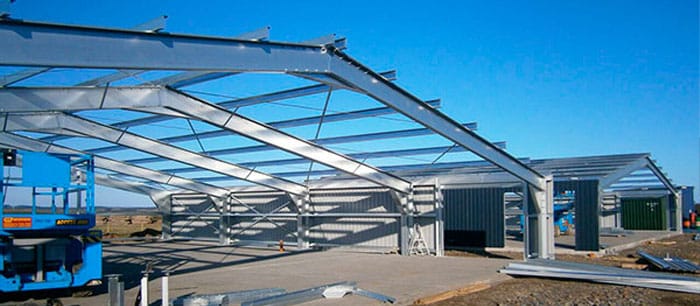How Sustainable is Steel as a Building Material?
The construction industry in the UK – and around the globe – is under the spotlight when it comes to developing sustainable building practices. This includes increasing the use of renewable or sustainable natural resources, reducing waste and energy consumption, and enhancing the quality of the environment for all. In this article, Integrity considers the 5 environmental benefits of steel buildings.
The Use of Structural Steel in Construction
Structural steel now a key building material in the UK; it’s the core ingredient in industrial buildings, tall building structures, tunnels, bridges, and warehouses. This has to do with its strength and aesthetic qualities, but it’s also because steel is a metal that can be reused endlessly. This makes it a valuable commodity in a world that is attempting to wean itself off waste.
Let’s take a closer look at the sustainable attributes of structural steel.
5 Environmental Benefits of Steel Buildings
- Steel is Recyclable
- Minimal Waste in Production & Use
- A Long-Lasting and Durable Building Material
- Excellent Energy Conservation
- Steel Construction Reduces Air Pollution
1. Steel is Recyclable
Steel is currently the most recycled material in the world. Only 3% of existing steel ends up in landfills; 12% is used for new building, and the rest goes for scrap charge in furnaces. The reason why it’s so widely used in its recycled form is that it doesn’t degrade with reuse. This means that it can be recycled in perpetuity.
It is this recyclability that reduces the effect that steel has on the environment. Once made, it’s reuse requires 75% less energy than if created from scratch. Every tonne of recycled steel represents 1131kg of iron ore, 54kg of limestone and 633kg of coal that is not used to produce it.
2. Minimal Waste in Production & Use
The construction industry produces considerable waste when using materials such as concrete, brick and wood. When steel is used in construction, however, the parts are prefabricated for each project, and there is virtually no waste. As there are no by-products created in the recycling process, the production of waste in construction is substantially minimised when using structural steel.
3. A Long-Lasting and Durable Building Material
Steel is known to be extremely strong and durable. Because of this, steel can withstand large loads, which minimises the amount of steel required in the construction of buildings. Unlike alternative building materials, steel doesn’t warp, split, or crack and it’s extremely resistant to rust. Once in place, it can be relied upon to last for many decades.
4. Excellent Energy Conservation
A steel framed shed, or commercial building is an excellent way to make savings on energy bills. The material can be efficiently insulated with the effect that warmth is conserved inside throughout the winter, and heat is kept at bay during the summer. This cuts down on the use of heaters and air conditioners, as well as creating a better air quality for users of the building.
5. Steel Construction Reduces Air Pollution
“CO2 emissions and energy use in European steel production have already been halved since 1960, and the sector aims to achieve further cuts of 80-95% by 2050, compared to 1990 levels.” Additionally, the technology is now in place to allow CO2 by-products to be cleaned and reused. Dust emissions from steel production have fallen even further.
Why Work With Integrity Steel Buildings?
The goal of the team at Integrity is to maximise the many advantages of steel frame building construction. We’re situated in Bedfordshire, 50 miles north of London, with excellent links across the country. The buildings we deliver are bespoke to our clients’ requirements and they are delivered with a solid steel guarantee and full UKCA marking.
Would you like to speak to one of our engineers about a sustainable steel frame building in your home or for your business? Call Integrity today on – 01234 938150

